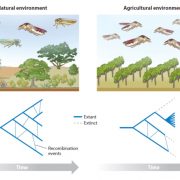
Review. Xylella fastidiosa: Insights into an emerging plant pathogen ($) (Annu. Rev. Plant Phytopathol.)
Plant Science Research WeeklyThe plant pathogenic bacterium Xylella fastidiosa occurs widely and often asymptomatically, yet it is associated with a few seriously bad disease outbreaks, the most recent affecting olive trees in southern Italy and adjoining regions. It also is the causal agent of Pierce’s Disease of grapevine, citrus…
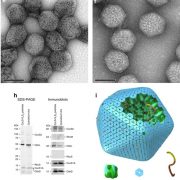
Carboxysome encapsulation of the CO2-fixing enzyme Rubisco in tobacco chloroplasts (Nature Comms.)
Plant Science Research WeeklyOne of the fundamental challenges facing terrestrial plants occurs when CO2 levels are depleted at Rubisco, causing its inefficient oxygenase activity to dominate. Some plants minimize this problem by adding a carbon-fixing step upstream of Rubisco, and various algae and cyanobacteria sequester Rubisco…

A single transcription factor promotes both yield and immunity in rice ($) (Science)
Plant Science Research WeeklyPlants regularly prioritize either growth or defense, leading to reduced growth rate when the plant is under attack. Wang et al. have identified a simple switch in rice that demonstrates this principle beautifully. The Ideal Plant Architecture 1 (IPA1) transcription factor is involved in controlling…
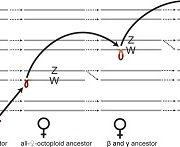
Plant sex regions can “jump” in strawberry (PLOS Biol.)
Plant Science Research WeeklySex chromosome restructure has happened frequently during the evolution of eukaryotes, often resulting in highly differentiated sex chromosomes. However, little is known about this process in plants. The wild North American octoploid strawberries (Fragaria) have separate sexes with homomorphic, female…
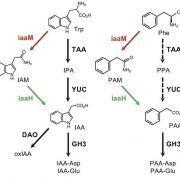
Agrobacterium tumefaciens enhances biosynthesis of two distinct auxins in crown galls ($) (Plant Cell Physiol.)
Plant Science Research WeeklyKiyoshi et al. investigated auxin biosynthesis during the formation of crown galls by Agrobacterium tumefaciens. Agrobacterium introduces into the plant T-DNA containing two auxin biosynthesis genes iaaM (TRYPTOPHAN-2-MONOOXYGENASE) and iaaH (INDOLE-3-ACETAMIDE HYDROLASE). The authors used LC-MS/MS to…

A rationally designed JAZ subtype-selective agonist of jasmonate perception (Nature Comms.)
Plant Science Research WeeklyMany plant hormones have pleiotropic effects, switching on and off multiple, seemingly unrelated processes. As an example, jasmonates both turn on herbivore defense responses and suppress growth. Takaoka et al. have elegantly separated these, by developing a jasmonate mimic that only activates defences.…
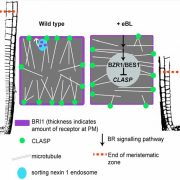
CLASP sustains cell proliferation through a brassinosteroid signaling negative feedback loop ($) (Curr. Biol.)
Plant Science Research WeeklyBrassinostreroid (BR) regulates the development of the root apical meristem. High levels of BR have inhibitory effects on cell production rates in the meristem and low levels show the opposite effect. Ruan, Halat et al. showed that BR regulates microtubule-associated CLASP (CLIP-Associated Protein) expression…
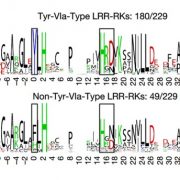
Phosphocode-dependent functional dichotomy of a common co-receptor in plant signalling (Nature)
Plant Science Research WeeklyIt’s often surprising and a bit confusing when a protein that has been implicated in one process reveals itself to be involved in a totally different process as well. BAK1 (also known as SERK3) was first identified as a co-receptor for brassinosteroids (BRs), forming ligand-induced heterodimers with…
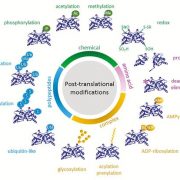
What We're Reading: September 14th
Plant Science Research WeeklySpecial issue: Orchestrating the proteome with post-translational modifications
I guess we're well past the stage of thinking "one gene - one protein", but even a single polypeptide isn't really one protein, due to the huge number of different types of post-translational modification (PTM) it can…

